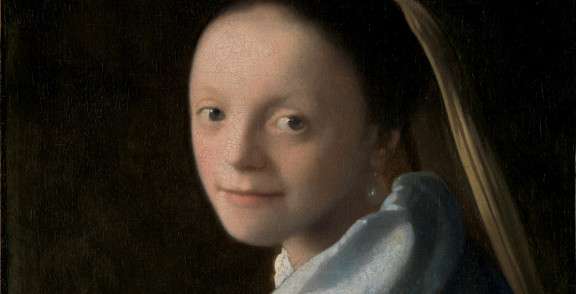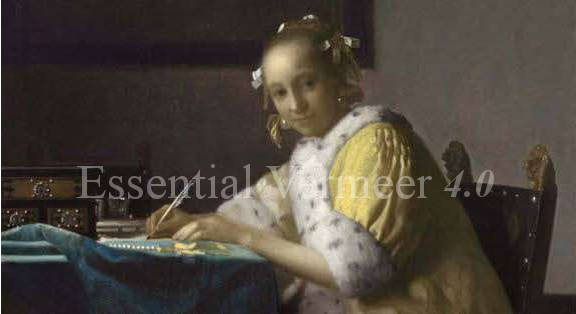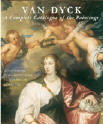- Item 1
- Item 2
- Item 3
- Item 4
- Item 5
- Item 6
By purchasing books via any of the Amazon.com or Amazon.uk links below, you will be contributing to the growth and maintenance of Essential Vermeer website, obviously, at no additional cost to your purchase.
Sir Anthony Van Dyck (1599–1641) is among the greatest portrait painters of all time. The 1990s opened and closed with major exhibitions devoted to his work, and now the long-awaited catalogue raisonné of his painted oeuvre is complete. A native of Antwerp, Van Dyck also lived and worked for long periods in Italy and England, where his brief, productive life ended. He is best known for his work at the court of Charles I. His full-length portraits of aristocrats in the Caroline court and in Genoa, Antwerp, Brussels and The Hague influenced the history of Western portraiture into the twentieth century in the work of John Singer Sargent. Handsomely designed and illustrated, the volume includes a reproduction of every known authentic painting by the artist as well as the provenance and the significant facts and literature on each. This catalogue raisonné is, fittingly, the collaborative work of an international team devoted to the study of this major international artist. Susan J. Barnes, an independent art historian, co-curated a Van Dyck exhibit in Washington, D.C., 1990. Nora De Poorter is director of the Rubenianum, Antwerp. Oliver Millar, Surveyor Emeritus of The Queen's Pictures, organized an exhibition of Van Dyck's English work at the National Portrait Gallery, London, 1982–83. Horst Vey, former director of the Kunsthalle, Karlsruhe, is author of the standard work on Van Dyck's drawings.
This is the fullest biography of the great painter ever to appear in English and gives us as well rounded and full a picture of van Dyck's life as is possible. The materials for such a biography are few and any biographer is ultimately limited by what he can find. Luckily in this case the author can supplement these by referring to the paintings. His aim is to abolish the reputation van Dyck has as a court painter, not just to Charles I but to the English aristocracy and to show us 'a much more complex and vital personality.' Mr Blake argues that van Dyck 'was a man who defined himself almost entirely by his work and the satisfactions he derived from it are the most important keys to his character.' Sometimes biographies of artists can become boring lists of paintings executed especially, as in this case, when manuscript sources are so limited. However in this case the author writes with ease and persona l involvement which makes the story more attractive.
Like Dürer, Rembrandt and Goya, Anthony van Dyck (1599–1641) made a key contribution to the art of printmaking. He was himself a talented etcher, and prints after his paintings were cut by the best engravers of his day. Yet, to date, his printmaking has suffered from undeserved neglect. This book discusses Van Dyck's first acquaintance with the medium in Rubens's workshop and illuminates the genesis of the Iconography, a portrait gallery of illustrious contemporaries. All his etchings are catalogued together with preparatory drawings and grisailles, as well as proofs containing corrective flourishes. Furthermore the book includes a selection of the prints after paintings by Van Dyck. A number of them were the initiative of the artist himself, and others were produced on behalf of publishers and engravers. Works from the eighteenth century are included to illustrate the influence Van Dyck exerted until long after his death—even in France and England.
The introductory essays discuss the collecting of Van Dyck prints, the phenomenon of the trial proof, and technical aspects of the etchings. Based on new archival research the biographies are included of all those who were instrumental in the production of the prints: engravers, publishers and the persons to whom they were dedicated by Van Dyck.
Many of the prints are reproduced in color and the book has numerous comparative illustrations making it essential not only for scholars and enthusiasts of Van Dyck's work, but all those interested in the history of printmaking.
While there is no dearth of scholarly literature about the great Flemish painter Anthony van Dyck, there has been no recent attempt at a comprehensive English-language accounting of his life and art. Unfortunately, the need for an accessible and up-to-date synthesis has not been satisfied by Blake's mostly wrongheaded opus. Relying on a tenuous foundation of questionable psychological theorizing and little historical evidence, the author invents Van Dyck as a psychically wounded, mother-grieving, father-conflicted, sexually and religiously repressed genius. Having manufactured the artistic personality he requires, the novelist-author (e.g., Fat Man's Shadow) not unsurprisingly finds these personal qualities manifested within a significant portion of the artist's oeuvre. The poverty of the formal articulation of the works themselves, the inadequate appreciation of the crosscurrents of contemporary art and taste, the tendency to enlard with trivia, and the grossly inadequate illustrations all combine to make this an unessential work.
— Robert Cahn, Fashion Inst. of Technology, New York
This large, stately, cloth-covered hardback contains over 100 of van Dyck's masterpieces, including rarely seen works. Its 359 pages are lavishly illustrated with quality full-color reproductions, including painting details and preliminary drawings. A chronology, descriptions of each work, and essays by prominent scholars in the field make this the most authoritative volume on the artist to date.









 or anything else that isn't working as it should be, I'd love to hear it! Please write me at:
or anything else that isn't working as it should be, I'd love to hear it! Please write me at: